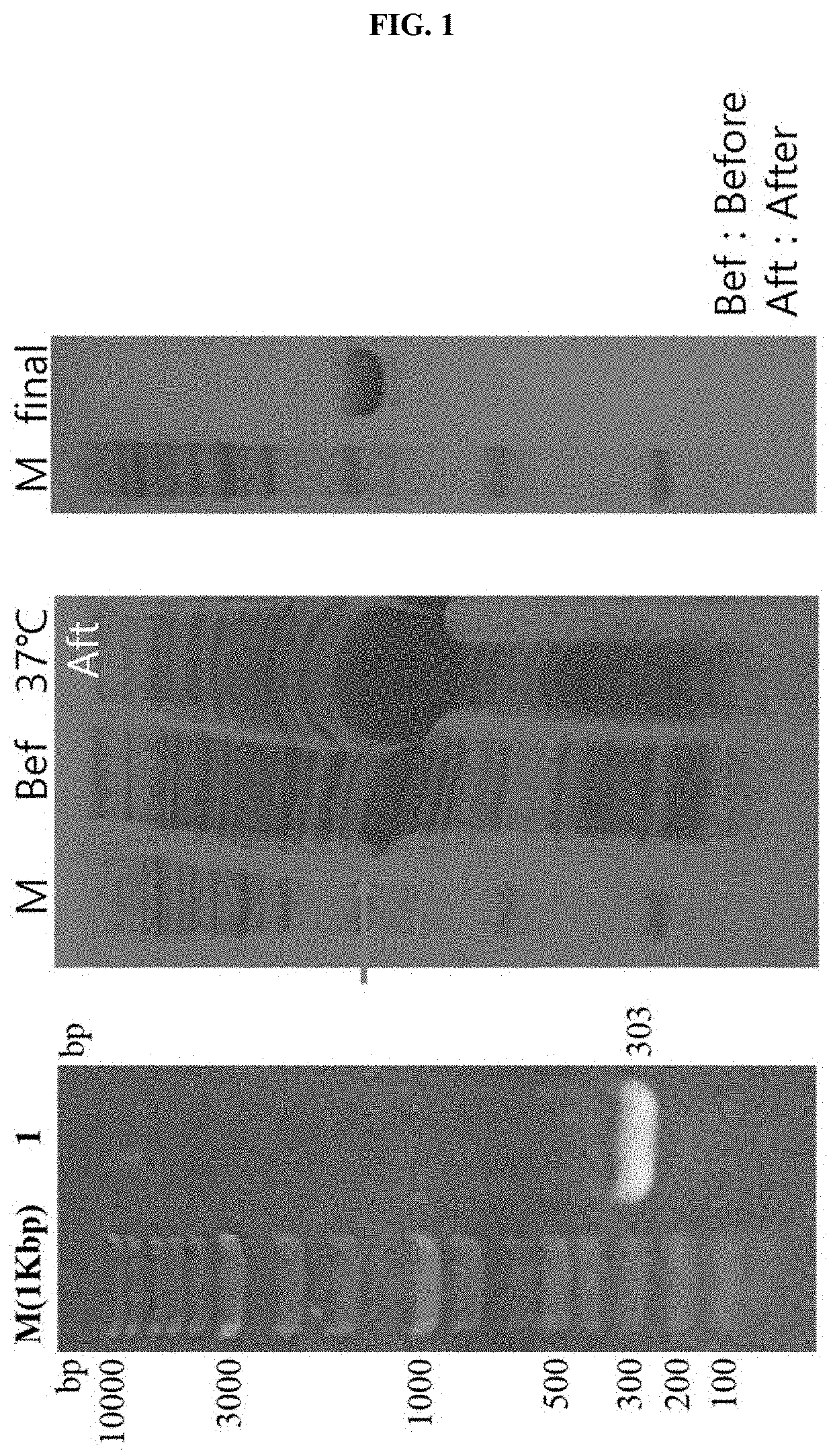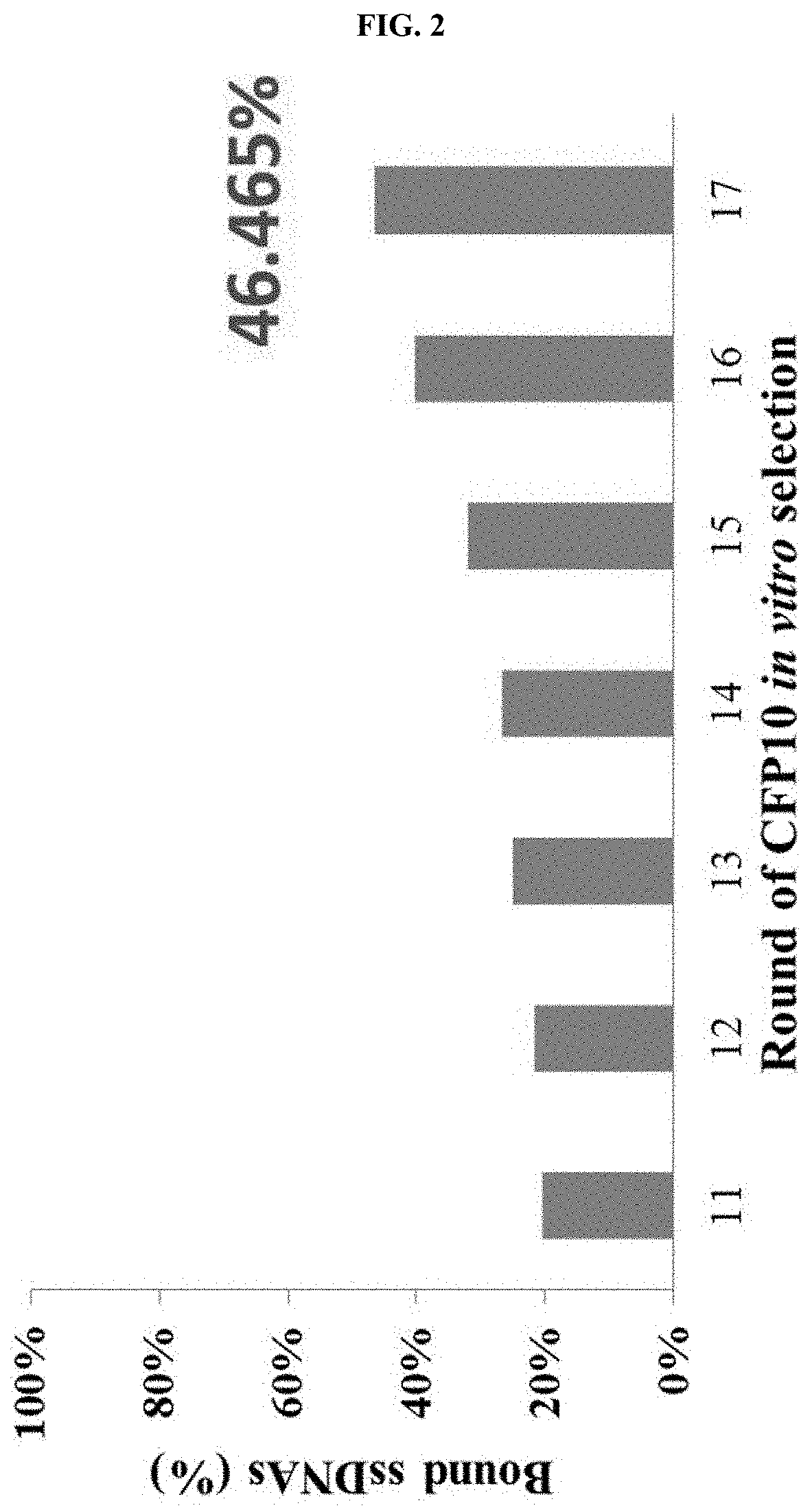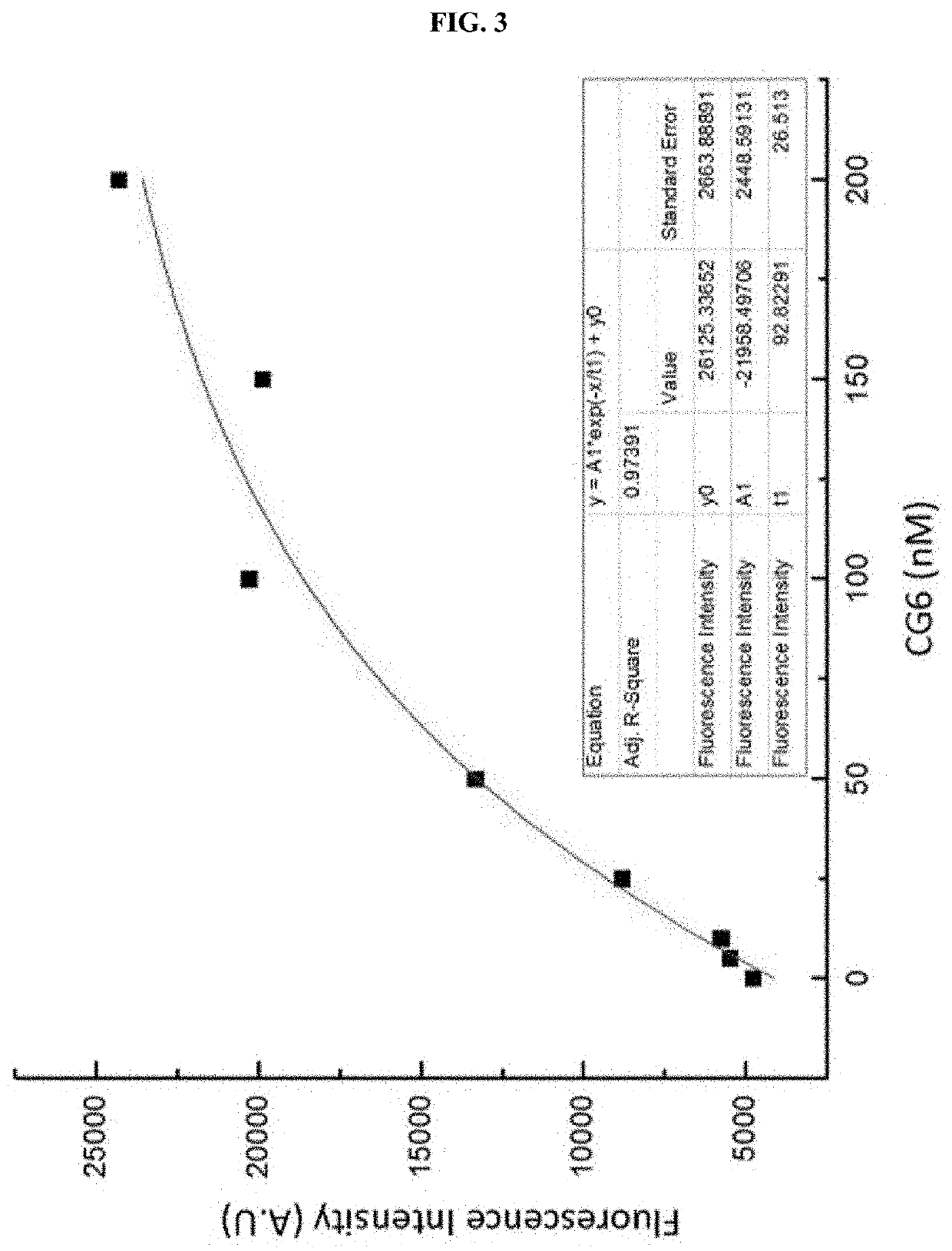DNA aptamer specifically binding to CFP10, and use thereof
a technology of aptamer and cfp10, which is applied in the field of aptamer for protein detection, can solve the problems of low false-positive rate, low stability, and false-positive results, and achieve excellent binding ability, specific binding capacity, and the effect of excluding false-positive responses
- Summary
- Abstract
- Description
- Claims
- Application Information
AI Technical Summary
Benefits of technology
Problems solved by technology
Method used
Image
Examples
example 1
e Cloning
[0046]To amplify the gene for culture filtrate protein 10 kDa (CFP10), a forward primer including a BamH1 restriction enzyme recognition sequence (5′-CCC GGA TCC ATG GCA GAG ATG AAG ACC G3′ (SEQ ID NO: 1)) and a reverse primer including a Xho1 restriction enzyme recognition sequence (5′CCC CTC GAG TCA GAA GCC CAT TTG CGA GGA CAG 3′ (SEQ ID NO: 2)) were used.
[0047]Genomic DNA of Mycobacterium tuberculosis H37Rv was used as a template for gene amplification and amplified by polymerase chain reaction (PCR) using i-pfu polymerase. Each process of the PCR is as follows: 1) incubation at 98 □ for 20 seconds as a process of denaturing double-stranded DNA as a template; 2) incubation at 55 □ for 20 seconds as a process of annealing the template with the primers; and 3) incubation at 72 □ for 30 seconds as a process of extending new strands, and a cycle of these processes was repeated 20 times.
[0048]The amplified CFP10 gene was cloned into a pET32a vector containing (His) 6-tag thro...
example 2
n of CFP10 Protein
[0049]BL21(DE3) cells transformed with the CFP10 gene were cultured in a Luria Bertani (LB) medium and cultured at 37 □ until optical density (OD) reached 0.563 at UV 600 nm. Thereafter, isopropyl-thio-b-D-galactopyranoside (IPTG) was added to a final concentration of 20 mM to induce expression of the protein, followed by incubation at 37 □ for 4 hours. The expression of the protein was confirmed by SDS PAGE, and the cells were separated from the medium using a centrifuge and washed once with PBS (10 mM sodium phosphate, 150 mM NaCl, pH 8.0) buffer.
example 3
[0050]To purify the CFP10 protein expressed in the bacterial cell BL21(DE3) with high purity, the cells were lysed in a cell lysis buffer (20 mM Tris, 500 mM NaCl, 0.5 mM β-mercaptoethanol, 5% glycerol, pH 8.0), and then ruptured by sonication using a sonicator for 15 minutes. Separation was carried out at 18,000 rpm for 40 minutes using a centrifuge to separate the protein in an aqueous solution state from the cells.
[0051]In addition, to obtain a high-purity protein, the property of binding between Ni-Nitrilotriacetic acid (Ni-NTA) and a (His)6-tag amino acid was used. Specifically, as illustrated in FIG. 1, a Ni-NTA column was connected to a fast protein liquid chromatography (FPLC) system, and CFP10 in an aqueous solution state was flowed into the column, thus allowing the CFP10 to bind thereto. Since the (His)6-tag of the protein bound to the Ni-NTA column competitively binds to an imidazole compound, to separate the target protein from the column, an elution...
PUM
| Property | Measurement | Unit |
|---|---|---|
| OD | aaaaa | aaaaa |
| pH | aaaaa | aaaaa |
| pH | aaaaa | aaaaa |
Abstract
Description
Claims
Application Information
 Login to View More
Login to View More - R&D
- Intellectual Property
- Life Sciences
- Materials
- Tech Scout
- Unparalleled Data Quality
- Higher Quality Content
- 60% Fewer Hallucinations
Browse by: Latest US Patents, China's latest patents, Technical Efficacy Thesaurus, Application Domain, Technology Topic, Popular Technical Reports.
© 2025 PatSnap. All rights reserved.Legal|Privacy policy|Modern Slavery Act Transparency Statement|Sitemap|About US| Contact US: help@patsnap.com



